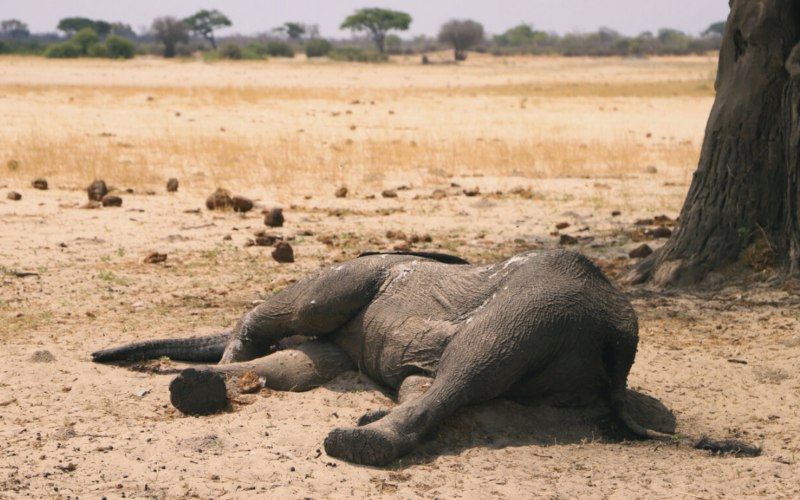Hwange National Park in Zimbabwe is grappling with the devastating impact of a prolonged drought during the austral summer, leading to the tragic demise of over a hundred elephants. With rain severely delayed and temperatures soaring to 40 degrees Celsius, the parched landscape bears witness to the heartbreaking sight of elephant carcasses, marking the severity of the water scarcity.
Hwange National Park, spanning 14,600 km2, is home to more than 45,000 savannah elephants, a population deemed environmentally threatening due to its size. The prolonged drought has exacerbated the quest for water, placing the elephants at risk. Rangers, such as Simba Marozva, are compelled to patrol daily, discovering the remains of elephants that have succumbed to dehydration.
Elephants, consuming over 200 liters of water and 140 kilograms of food daily, face immense challenges during the drought. The quest for water compels them to venture perilously close to human settlements on the park’s outskirts, leading to risks of contamination from inhabited areas. Thirsty elephants resort to drinking from pools near houses or hotels, posing additional threats to their well-being.
While conservation efforts in the area have led to an increase in elephant numbers, the success is becoming a double-edged sword. Environmentalists suggest that Zimbabwe’s nature parks, including Hwange, house twice as many elephants as their capacity allows. Climate change compounds the challenges, with rising temperatures and prolonged droughts increasing stress on the elephant population.
Hwange Park is part of a transboundary conservation area that includes the Okavango Delta and the Zambezi River. An aerial census in 2022 estimated over 225,000 elephants in the broader region, indicating the success of conservation efforts. However, the pressure on resources within Hwange Park is intensifying, leading to concerns about the park’s carrying capacity.
Tinashe Farawo, spokesperson for Zimbabwean parks, acknowledges the gravity of the situation in Hwange and attributes the elephant deaths to the harsh conditions. Despite the challenges, he notes a slight relief with recent rains. The impact of global warming, contributing to longer droughts, poses a significant threat to various wildlife, but the attention remains focused on the elephants due to their sheer size.
The plight of elephants in Hwange National Park underscores the complex challenges posed by climate change and overpopulation. As conservation authorities navigate the delicate balance between wildlife preservation and resource limitations, the devastating consequences of drought highlight the urgency of sustainable conservation practices in safeguarding these majestic creatures.








